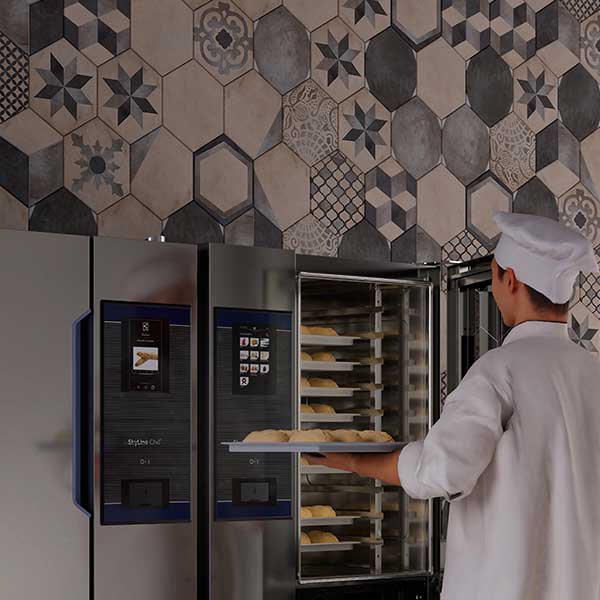The cook and chill process allows food to be prepared, cooked and rapidly chilled to make it safe and to preserve it for reheating at a later stage.
The cook and chill process was originally invented so food could be prepared in advance, mainly with the idea of separating food production and service. It optimises preparation times and standardises processes, as well as assuring optimal food safety.
Undeniably, there are many advantages to using a process, but a number of issues still have to be considered. Because having a cook and chill system in the kitchen does not just mean buying an appliance or two – the workflow also must be set up correctly.
Cook and Chill process: things to consider/watch out for
The cook and chill process offers a variety of features and benefits, including:
1. Food safety
The process delays bacterial and other pathogens’ growth as food goes through the so-called “danger zone” (between +8 °C and +68 °C) more quickly. This means that food is safe to be stored for days without fear of its flavour being compromised, consequently extending its shelf life.
2. Reduced labour costs
The cook and chill process allows chefs and kitchen staff to portion and group together food preparation workflows; it allows the standardisation of most operations, which means more efficient use of labour.
However, to save with cook and chill, workflows must be correctly and efficiently planned. This means being aware of the capabilities that new appliances offer and the best way to use them: savings will be small if the appliances are more productive, but workflows are still inefficiently planned. Your savings will increase with ergonomically designed appliances and efficiently designed workspaces, but no appliance can revolutionise a poorly planned kitchen workflow.
3. No food wastage
If used correctly, cook and chill extends the products’ shelf life, so food can be preserved for several days and will not go to waste. After the process has taken place, all dishes keep all their essential characteristics: flavour, texture, appearance and nutritional value are rated just the same as freshly cooked food.
Shelf life of food is increased if the critical control points of each step of the process are respected; otherwise, there is a risk of being forced to throw away food. Two hints:
- Familiarize yourself with cook and chill appliances, to understand their capabilities: capacity, proper operating care, maintenance
- Again, take great care in food preparation and cooking workflow.
Food safety is the most important feature, but the process requires some attention.

4. Chilling time
The blast chilling process must be fast enough to avoid giving pathogens the chance to develop, but slow – or rather, controlled – enough to avoid food spoilage. Blast chilling is a method of cooling food very quickly, bringing it to a much lower temperature which makes it safer from bacteria growth. In fact, bacteria tend to multiply faster in temperatures between +8 °C and +68 °C. A blast chiller allows you to reduce the temperature of cooked or heated food from +70 °C to +3 °C within 90 minutes.
5. Process control
Although cook-chill can prevent a lot of contamination, safety concerns still exist during preparation, and almost all of them are related to people (i.e. washing hands, cleaning surfaces, avoiding cross-contamination between foods). The cook and chill process requires constant vigilance.
These features must be leveraged for a correct approach to cook and chill processes. Without them you risk losing time and money to processes that are unnecessary.
What is the difference between cook-chill and cook-freeze?
The purpose of the cook and chill method is to safely preserve food for later consumption that may involve reheating. Thanks to this process, the product’s shelf life is extended, as it can be preserved after cooking for several days without losing quality or consistency.
Cook-freeze is a specialised food production and distribution system for prolonging the life of prepared and cooked food by rapid freezing, storage at very low temperatures and regenerating (reheating) at the time of service.
In summary, the main difference between the two processes is the temperature at which the food is stored.
What equipment do I need for a cook-chill system?
To safely and efficiently perform the cook and chill process, you would need the SkyLine Cook and Chill solution, which includes a combi oven and a blast chiller. The two appliances are able to seamlessly communicate one with the other thanks to the self-intuitive connection between the SkyLine appliances.
